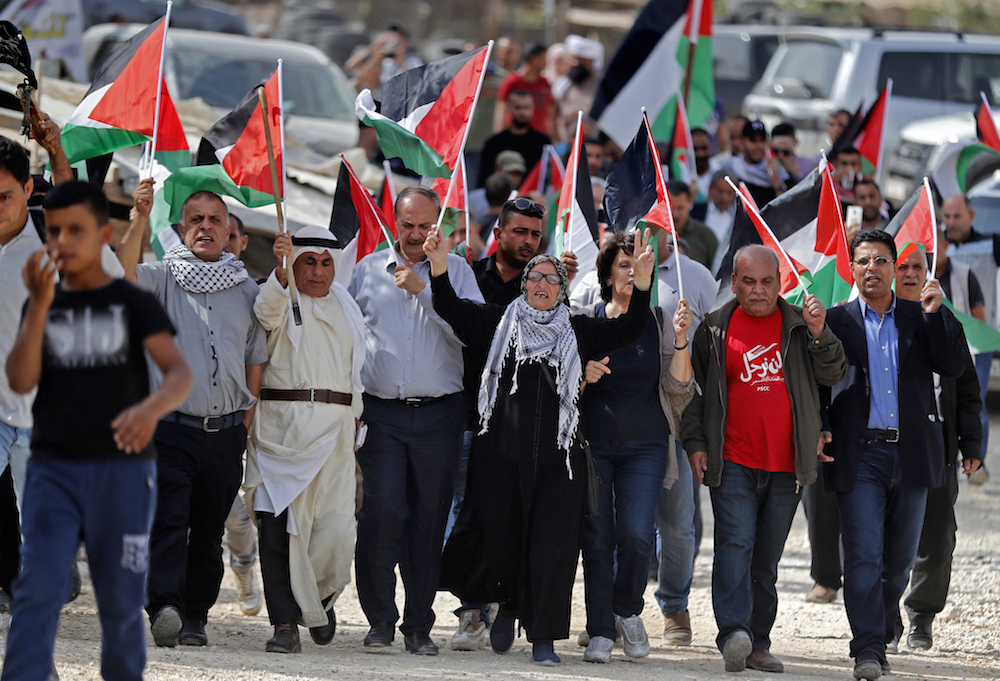Palestinians remain deeply divided

Two important developments pertaining to the Palestinian national struggle have taken place in recent days. The first was the Oct. 30 decision of the Palestinian Central Council (PCC) to instruct the Palestine Liberation Organization (PLO) and the Palestinian Authority (PA) “to suspend recognition of the state of Israel” until Israel recognizes the Palestinian state with the borders as of June 4, 1967, and with East Jerusalem as its capital.
Further, it called for the suspension of security coordination with Israel and full economic disengagement. This was preceded a few days earlier by a call to the PCC by the Fatah Revolutionary Council to dissolve the Palestinian Legislative Council (PLC) — the Palestinian parliament.
The second development was the announcement on Nov. 1 that Hamas had accepted security understandings with Israel in Gaza. Thus, while demonstrations will continue, these will be non-violent, will keep away from the border fence, and there will be no attacks on Israeli security personnel. In return, Israel will ease living conditions in Gaza by allowing the entry of fuel into the strip and the monthly transfer of $15 million of Qatari funding to pay the salaries of government employees. This agreement will last for six months.
The call to end engagement with Israel has been met with derision by most Arab commentators. They have noted that the PCC meeting was poorly attended and important members of the PLO were absent, largely due to the ineffectiveness and low credibility of this body. Recommendations similar to those just passed had been issued in 2015 and have remained unimplemented since then.
The agreement between Hamas and Israel is the product of tremendous effort exerted by Egyptian officials throughout October to reconcile the two viscerally hostile entities. Hamas has been anxious to maintain the momentum of the weekly “Great March of Return” demonstrations in Gaza, which have highlighted the Palestinian cause through the international media, revealing unarmed Palestinian youngsters bravely fighting for their homeland against a powerful, bloodthirsty and cruel enemy.
But Hamas has been concerned about the high casualties — since the protests began at the end of March this year, more than 200 Palestinians have been killed and 10,000-plus have been injured. The agreement allows it to continue the protests but without harm to the demonstrators.
The call to end engagement with Israel has been met with derision by most Arab commentators.
Talmiz Ahmad
The agreement between Hamas and Israel is important for the latter as well. Prime Minister Benjamin Netanyahu, in candid remarks to the media on Oct. 29, said that Israel “has no interest in toppling the Hamas regime” in Gaza. He said the collapse of the Hamas administration “would blow up in our faces.”
He pointed out that military action in Gaza would give no advantage to Israel. This is because “we would still have no-one to give it to,” he said. He was making it clear that he had no interest in assuming responsibility for the administration of 2 million disgruntled Palestinians in Gaza, who are living in squalid conditions in the world’s largest prison.
Beyond the military factor, as Israeli commentator Ben Caspit has pointed out, Netanyahu’s principal consideration in doing business with Hamas is to maintain the divide between Ramallah and Gaza. If the Occupied Territories were to be united under the PA, then the latter would have to be accepted as a credible partner for peace — a scenario in which Netanyahu has no interest whatsoever.
According to observers, once the “tahdi’a” (lull or calming down) holds in Gaza, Egypt is likely to promote further indirect engagement between Hamas and Israel to address other issues, such as the return of the bodies of two Israeli soldiers and the release of two civilians in custody in Gaza.
Hamas’ rejection of mindless rocket attacks on Israel and provocations by demonstrators in Gaza has been welcomed in the region. One Jordanian commentator believes this signifies the “maturing” of the Palestinian struggle, in which military action is being directly linked to political gain rather than mindless demonstrative effects, which had been the case earlier.
On the other hand, the PCC’s resolution to disengage with Israel might suggest the idle posturing of lightweight poseurs with little credibility in Palestinian counsels. A matter of greater concern, however, is the overt attempt by the head of the PA, Mahmoud Abbas, to get the PCC to dissolve the PLC, in which Hamas enjoys a majority, even though there is no legal sanction for this action. There seem to be concerns in Fatah circles that, after Abbas, the acting presidency of the PA will constitutionally be handed to the Speaker of the PLC — Hamas member Aziz Duwaik. Thus, power would irrevocably shift into Hamas’ hands.
These unfortunate shenanigans highlight the deep divide at the heart of the Palestine movement, which has debilitated the cause just as President Donald Trump is formulating his “deal of the century.” This is already being viewed as a “second Balfour Declaration” by the Palestinians, which would extinguish their claims and aspirations once and for all.
- Talmiz Ahmad is an author and former Indian diplomat who holds the Ram Sathe Chair for International Studies, Symbiosis International University, Pune, India.









































